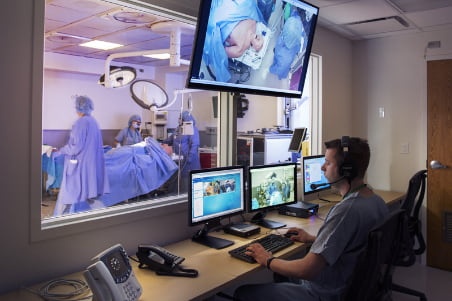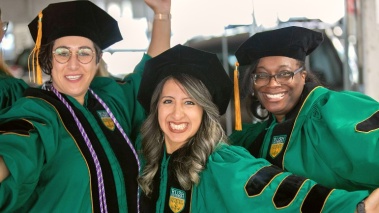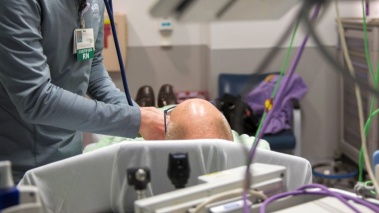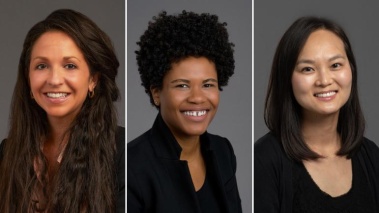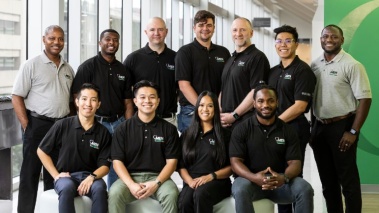Back in the 20th century, nursing students learned how to give injections by using an orange to simulate the skin of a patient. Then they practiced doing physical exams on each other.
"We don't do that anymore," says Lynn Richter, DNP, RN, CCRN, assistant professor at Rush University College of Nursing.
Instead, 21st-century nursing students work with lifelike mannequins that would make a science-fiction film director envious.
"The one we use has eyes that blink and pupils that react to light. It can breathe (exhaling real carbon-dioxide), cry, make urine and vomit," says Michael J. Kremer, PhD, CRNA, FAAN, professor and director of Rush's nurse anesthesia program, and co-director of the Rush Center for Clinical Skills and Simulation. "We can use the software to create abnormal pupil size and different heart rhythms, or deflate a lung," Kremer adds.
Obviously, today's simulators are not the plastic dummies campers use to learn CPR. Instead these have lifelike skin and programmable brains to mimic nearly every clinical situation a patient might present, and undergo nearly every clinical nursing procedure. They can be hooked up to blood pressure cuffs or EKGs, for example. They can simulate shock, a heart attack or even give birth.
"All the nursing students have access to simulators, and it's increasingly incorporated into all the curricula," Kremer says.
At Rush, beginning nursing students first meet the simulators in nursing management courses, where they are used to assess basic skills such as IV insertion and safe medication administration.
This allows instructors like Richter to determine skills to focus on. By the end of the term, the students practice emergency response with life-threatening cases.
Instructors love the simulators because they present a wide variety of situations students might not otherwise experience in the clinic.
"If we only had real patients, they would only see what presented at the time they were in school or in clinic. Now, we can make the mannequin have a heart attack so they will all have seen one," Richter says.
The simulators also promote patient safety.
"There are some things that nursing students can't do without a license. We don't let them hang blood products (give transfusions) for example. That is very risky. They don't get to do it until they graduate. But we can do it down in the sim lab," Richter says.
Students love the technology, too — once they get past their initial nervousness. They end up wanting more time for practice, Richter says.
The addition of video technology is making learning even richer. For example, simulator sessions are videotaped, then reviewed and debriefed afterward.
"The new generation wants instant feedback," Richter says. "It gives them tangible things to work, practice, and get better at."
And high-tech teaching doesn't end here. New technology is on the horizon for future students to look forward to.
Everything will get bigger and better, Kremer says. At Rush, the size of the simulator lab will expand from 7,500 to 19,000 square feet. It will have three high-fidelity labs with human simulators — neonates (newborns), infants, adults — and birthing simulators, plus training and debriefing rooms.
"The major focus of the new area is 12 clinic exam rooms where students will have encounters with patient actors called standardized patients. It will have the same clinical communication and electronic medical record that is used in the hospital, and the same drug dispensing machine," Kremer says.
It's a step toward creating a virtual hospital environment.
As for the technology, Kremer predicts more smartphone and tablet apps for learning.
"The simulators will continue to advance in fidelity and believability, too. I saw a synthetic cadaver at a conference last year, and our anatomy faculty thought it would reduce the need for human cadavers," he says. Virtual reality has also entered medical education. "There are trainers that are available for things like IV placement," Kremer says. "We are seeing more of this on the medical side with our surgeons."
However, the need for students to work with real patients in a clinical setting will never go away completely. Nothing can replace that human to human interaction," he adds.

